Frank Gehry's Philadelphia Museum of Art renovation breaks ground
Work has officially started on Frank Gehry's plans to "unclog the arteries" of the Philadelphia Museum of Art, a major renovation that will transform the layout of the historic building.
The Canadian-American architect's masterplan for the 1920s structure involves removing interventions made by Venturi Scott Brown in the 1980s, and opening up new routes so visitors can better orientate themselves within the museum.
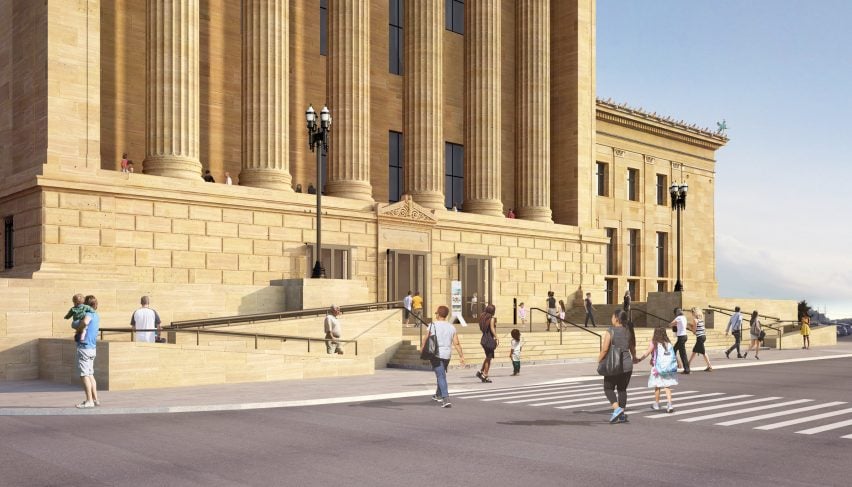
"We set about unclogging the arteries, and clarifying the roofs and spaces, and making them clearer so circulation will be much more understandable," said Gehry during the groundbreaking ceremony yesterday.
"And then the pièce de résistance – which hopefully will come soon – to create wonderful galleries that are much needed to complete the story that was started here in Philadelphia."
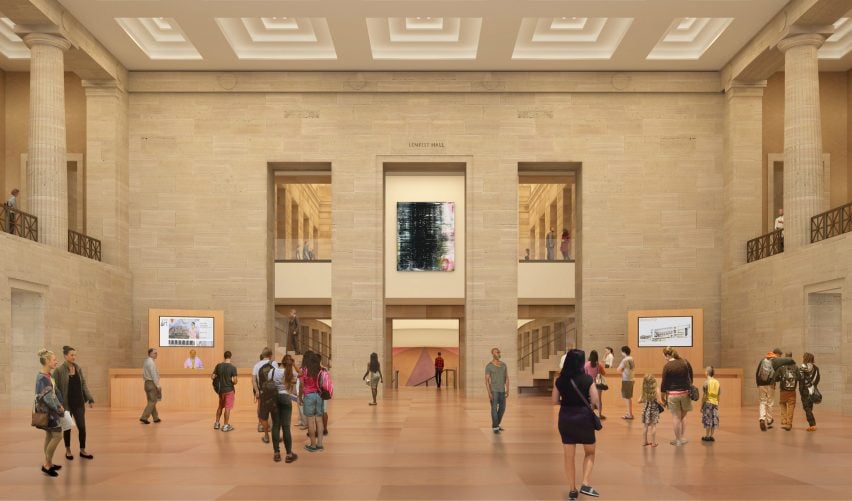
Major alterations to the layout include the removal of the central auditorium, which will open up views right through the building. The space in its place will be known as the Forum, and include a grand staircase that will connect vaulted walkways below to the floors above.
New galleries will be created for American and contemporary art on Level A, where corridors will be moved to provide views out to the east terrace and the Philadelphia skyline.
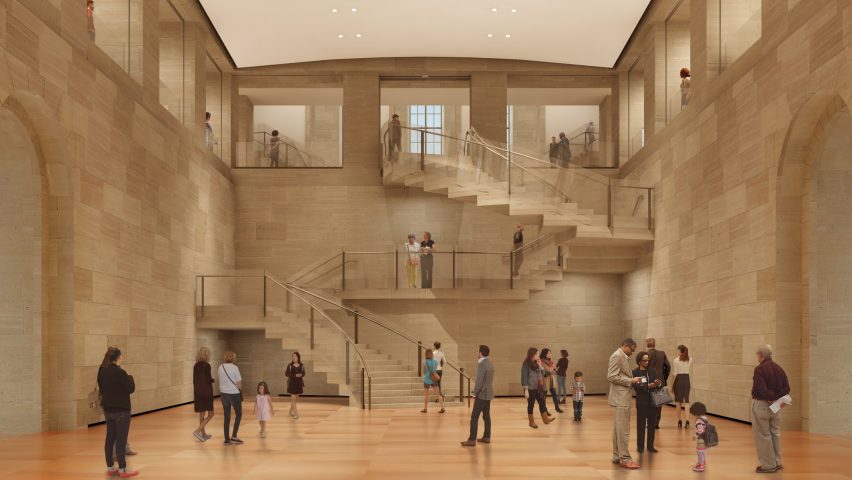
The reconfiguration will add 11,500 square feet (1,068 square metres) of exhibition space and 67,000 square feet (6,225 square metres) of public areas within the existing structure.
Other changes will encompass reopening the north entrances, improving accessibility, and adding sustainable features like double glazing and LED lighting.
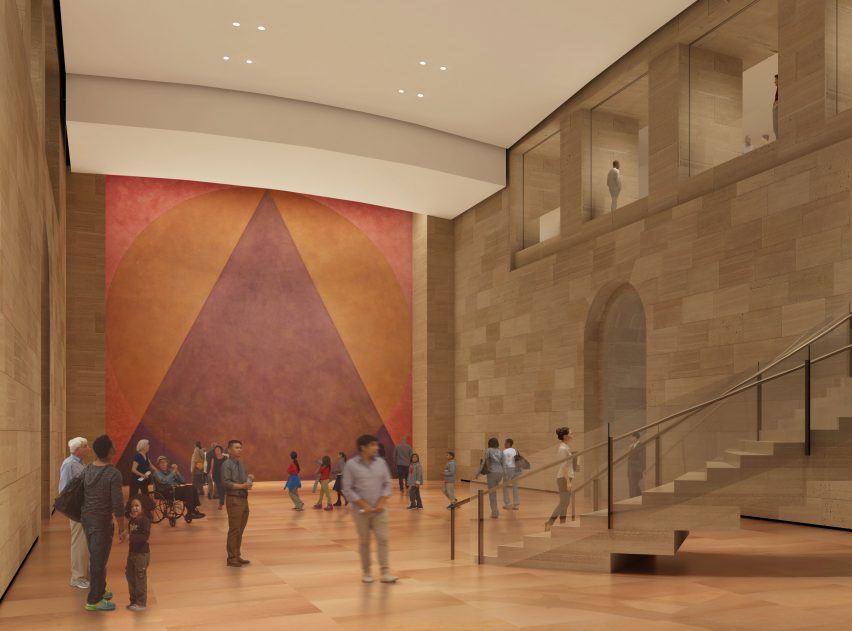
The Greek Revival building was designed by the firms of Horace Trumbauer, and Zantzinger, Borie and Medary (ZBM), and opened to the public in March 1928.
Alterations have been made throughout its history, notably by architects Robert Venturi and Denise Scott Brown in the 1980s, but Gehry said these interventions "didn't respect the geometry that the building had".
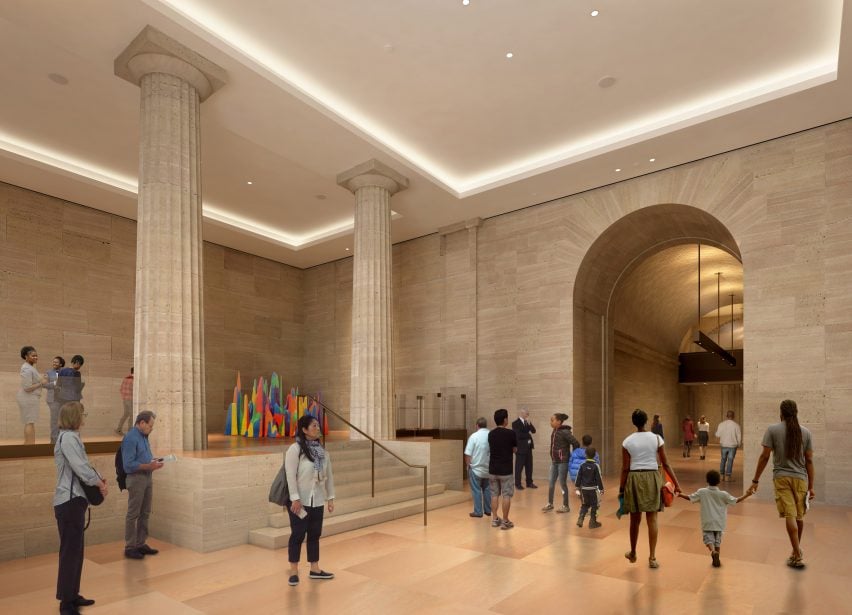
"[Trumbauer and ZBM] left an incredible architectural legacy," he said. "The DNA, the bones of this place are really fantastic for the present and the future."
"It just showed us the way to make it all work," Gehry continued. "We had to uncork a few cloggy arteries and clarify."
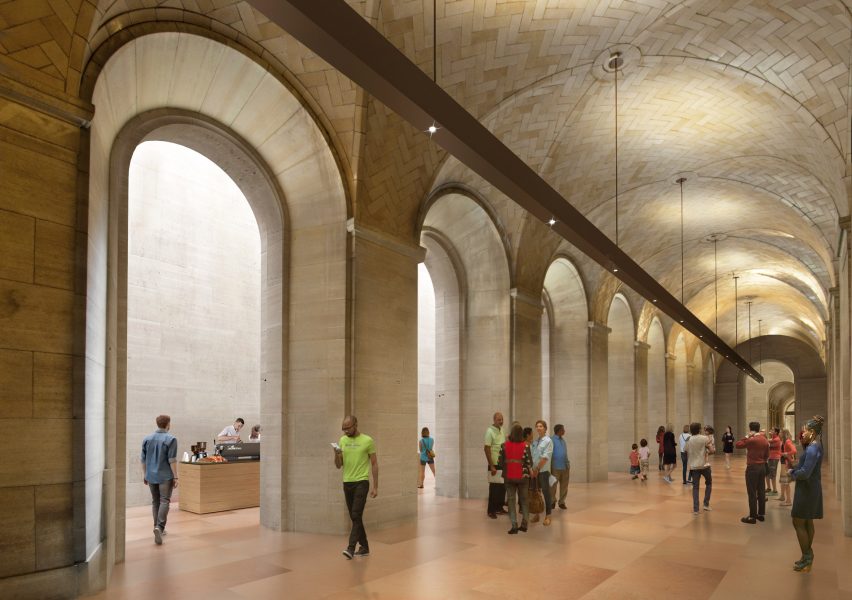
The renovation is being undertaken in phases. This stage is referred to as the Core Project and is scheduled to complete in spring 2020.
Gehry, 88, was approached by former director Annie d'Harnoncourt to work on the project in 2006, following the success of his Guggenheim Museum Bilbao, which opened in 1997 and transformed the economy of the Basque city.
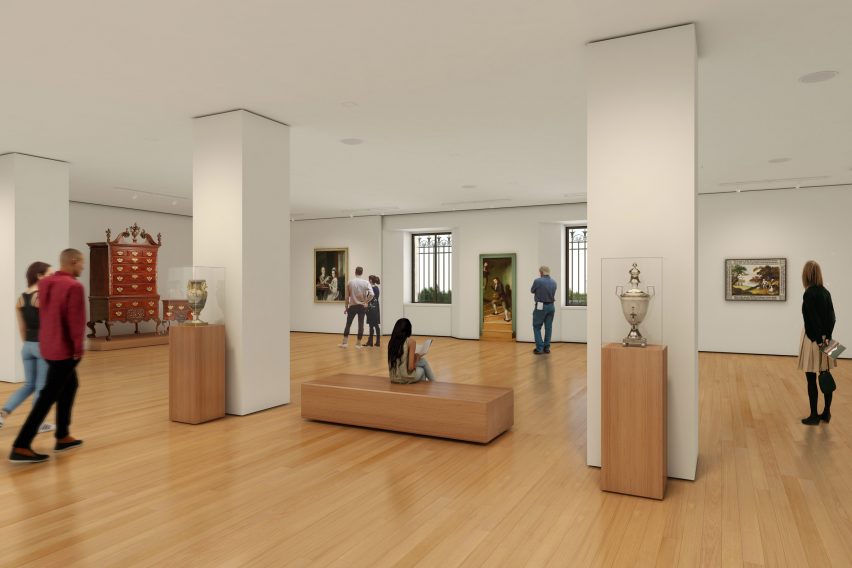
"In discussion with Annie," Gehry remembered, "she said: 'You just made a building in Bilbao that's above ground and it's sculptural, exciting and accessible and all those nice things and created a miracle – sort of. Could you do the same thing to a building? But you can't do anything on the outside'."
"Nice challenge," said the architect. "I had just done the other, so I thought: 'Why not? Let's try'."
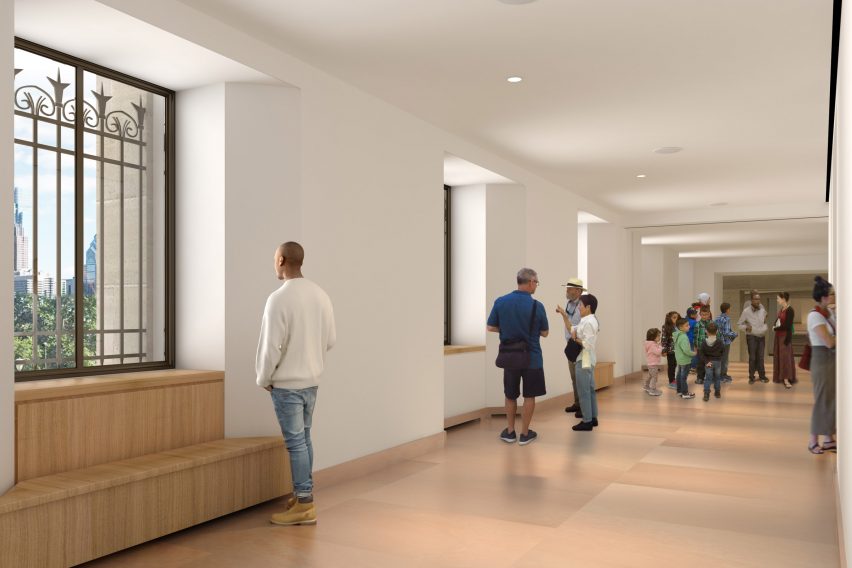
Before starting work on the main building, Gehry was asked to design a loading dock for the museum. The structure completed in 2014, the same year the designs for the Core Project were unveiled.
"It's the best G'damn loading dock in history," he said.
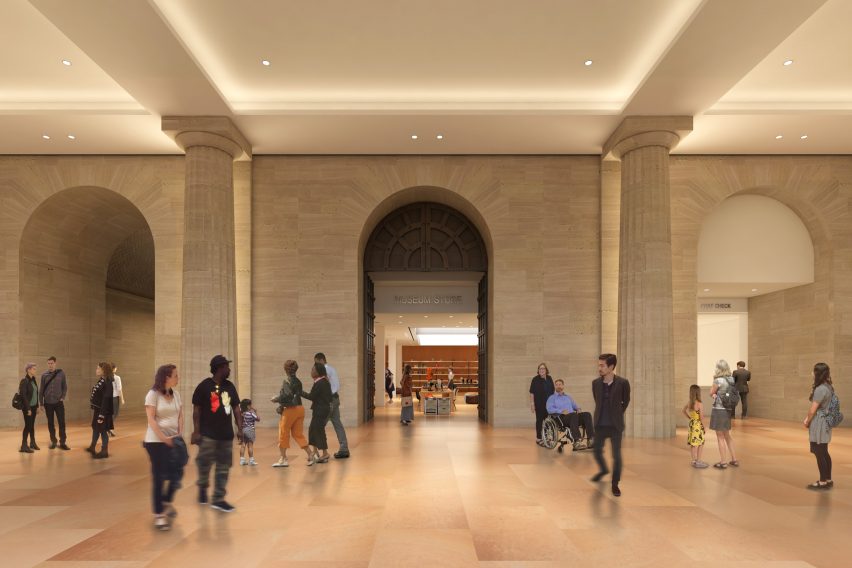
Once the Core Project is complete, further phases will include converting the attic for public use.
The museum will remain open to the public for the duration of the construction work, and host an exhibition presenting Gehry's plans.
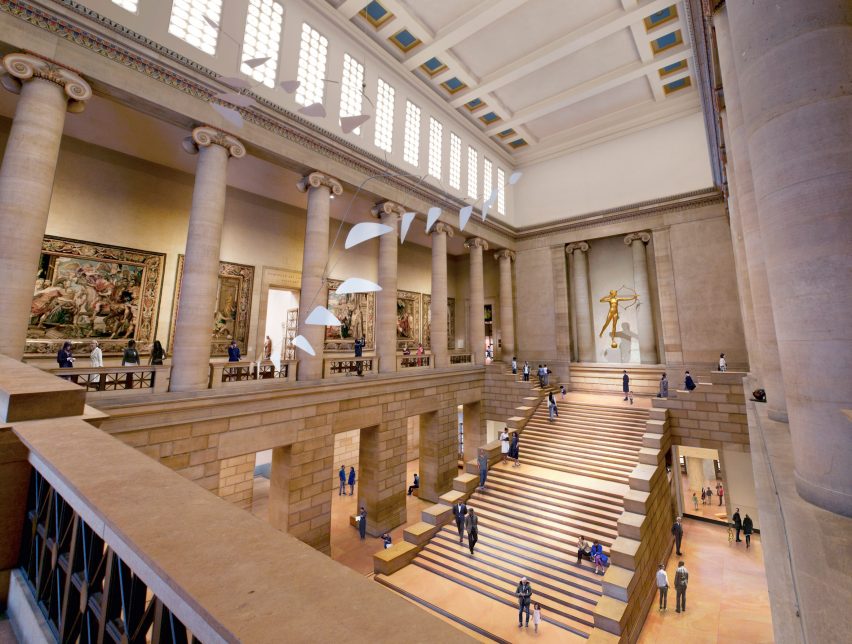
"Can it do what they did in Bilbao?" he asked rhetorically. "Hell yes – this place is going to be an amazing museum."
Apart from the Guggenheim, Gehry's best-known projects include the Walt Disney Concert Hall in Los Angeles, the Fondation Louis Vuitton in Paris and the Facebook campus in Northern California.
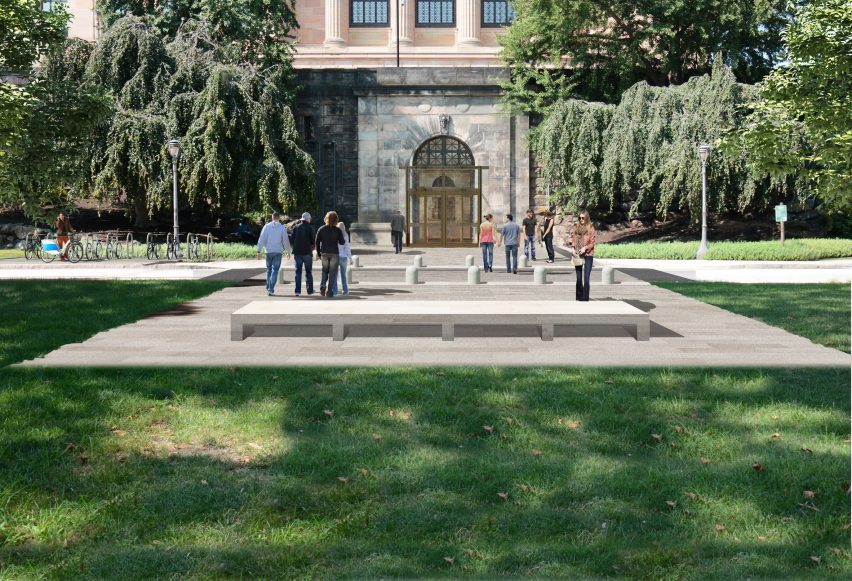
The 1989 Pritzker Prize winner is currently working on a mixed-use development on LA's Sunset Strip, while plans for his controversial Eisenhower Memorial for DC have finally been approved.
Earlier this week, an archive of Gehry's early drawings and sketches was acquired by the Getty Research Institute in his home city of Los Angeles. The architect is ranked at number 34 on Dezeen Hot List.